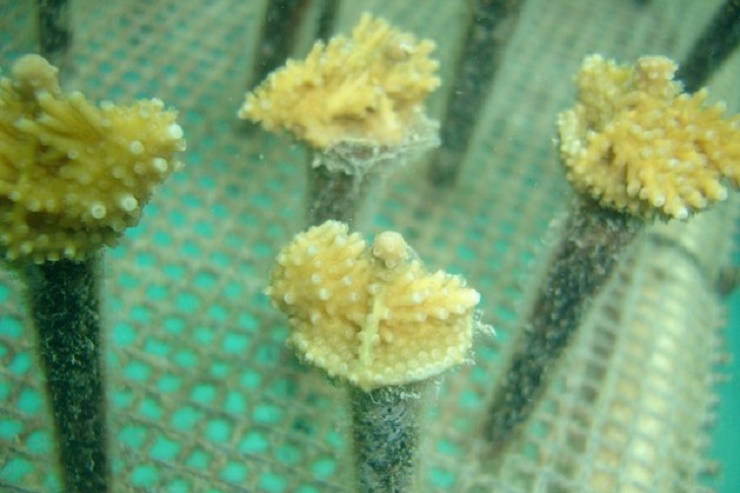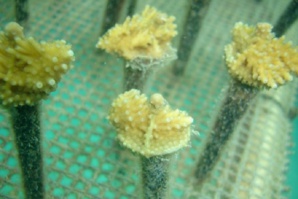Kingston – 23 July 2015 – In order to cope with rapid climate change along with meet the “disaster mitigation plans”, local “marine scientists” of Jamaica have taken initiative to rebuild the coral reef around the island. This attempt will restore the coastal defence line in “tiny fragments at a time”.
It has been around five years since the “experimental coral gardening” began as a means to attract divers. It was a “desperate bid” no doubt which tried to save guard the region from “frequent storm surges”, besides putting an end to the beach erosion. The efforts were recognised and the CMS section of the West Indies University received a $350,000 grant from the “International Development Bank”.
Thus, began the “Coral Reef Restoration Project” which is currently being looked after by the director, Dale Webber, a “coastal ecologist” by profession. Mr. Webber will be conducting “genetic research” on the coral reefs, in an attempt to arrive at the key to spawn coral in order to re-grow them all around the island, especially in the “Discovery Bay”, which has been a location of study for past forty years. Moreover, Webber added that the coral reef at the Bay shelter many “fast and slow growing” resilient corals. He explains further:
It has been around five years since the “experimental coral gardening” began as a means to attract divers. It was a “desperate bid” no doubt which tried to save guard the region from “frequent storm surges”, besides putting an end to the beach erosion. The efforts were recognised and the CMS section of the West Indies University received a $350,000 grant from the “International Development Bank”.
Thus, began the “Coral Reef Restoration Project” which is currently being looked after by the director, Dale Webber, a “coastal ecologist” by profession. Mr. Webber will be conducting “genetic research” on the coral reefs, in an attempt to arrive at the key to spawn coral in order to re-grow them all around the island, especially in the “Discovery Bay”, which has been a location of study for past forty years. Moreover, Webber added that the coral reef at the Bay shelter many “fast and slow growing” resilient corals. He explains further:
“They have tolerated disease, global warming, sea level rise, bleaching, etc. – all man and the environment have thrown at them – and are still flourishing. So they have naturally selected based on their resilience”.
Up till now, the coral nursery has put “60 fragments” of five coral species on the trees. The coral reef of Jamaica, which covers more than half of the coastline, has adapted itself through years of pollution, “improper development” and the effects of over fishing. However, the reef failed to protect itself against a massive weather catastrophe, the Hurricane Allen in the year of 1980. Scientists were hoping that the corals “would regenerate” but it is being observed that coping up with the bleaching effects of global warming along with frequent weather turmoil are beyond the regenerative power of the corals.
Death of corals is leading to sand erosion. Moreover, there is a prediction which says that the island would be devoid of its coral beauties within the next two decades, while other report asserts that presently only 8% of Jamaican coral reefs alive. In fact, scientists also blame the cause of coral death to
“...a die-off of the sea urchin population in 1982 and the continued capture of juvenile reef fish and the parrot”.
Nevertheless, the flame of hope is still kindled as the coral restoration projects “have yielded varying levels of success”. The method of restoration is a tedious one, wherein the divers have to nurse the tender coral by removing the unwanted algae from settling over the growing fragments of the corals. After the completion of the initial growth period, the fragments are then attached to the reefs. The result of this expensive process has been encouraging so far.
The citizens’ of Jamaica, from the executive head to the fishermen have all involved themselves in their own way in the project of coral restoration and have brought about a positive turn in the dying coral reefs. However, the effects of urbanisation, sewage discharge and agricultural run-off still pose a threat to the coral reef, making the task of restoration more difficult. Experts, hope to bring a rejuvenating change in the coral reef with the coming five years through –
“A combination of techniques, management measures and regeneration”.






